DERN provides access to quality assured and current information resources around the use of digital technologies and digital media in education. These resources are annotated and linked to relevant categories to enable access to collections of similar resources under specific topics.
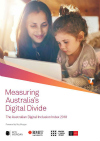
The ADII measures three dimensions of digital inclusion: Access, Affordability, and Digital Ability. Scores are allocated to particular geographic regions and sociodemographic groups, over a five-year period from 2014 to 2018. Higher scores mean greater digital inclusion. This ADII report incorporates data collected up to March 2018. The gap between people in Q5 low income households and Q1 high income households has widened since 2014, as has the gap between older and younger Australians, and those employed and those outside the labour force.
Subscribe to read the rest of the article »Log in
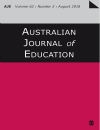
This paper reports on a research project conducted in Victoria, Australia, to connect 7 – 12 year old hospitalised children with their school using a specially designed Presence App. The trial of the App demonstrated that technological mediated communication can meet the needs of children in hospital for social connection to their classroom. It also showed advantages over technology such as videoconferencing and email in creating an on-going classroom presence for the hospitalised child while respecting privacy and attempting to minimise disruption in the hospital and classroom settings.
Subscribe to read the rest of the article »Log in
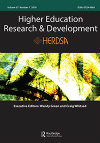
Dismore, Turner & Huang (2018) present research on new lecturers’ practices relating to student engagement. Most lecturers described engagement as an emotional construct (the need for students to ‘like’ learning) as well as a cognitive construct (what they learn). The study concluded that lecturers can best be supported by acknowledging the time it takes to gain confidence, experiment and take risks, and appreciating their need to respond to different expectations.
Subscribe to read the rest of the article »Log in
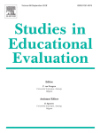
This study explored the claim that different classroom layouts can affect teaching and learning, comparing students’ attitudes to their learning experiences, motivation, engagement and academic outcomes in each layout over a school year. A correlation was identified between enhanced student attitudes in an ILE and higher English, Humanities and Mathematics academic achievement.
Subscribe to read the rest of the article »Log in

A study of the use of recorded lecture videos (RLVs) in mathematics instruction in Australia and the UK found similar outcomes in both contexts: a reduction in live lecture attendance coupled with a dependence on RLVs was associated with an increase in surface approaches to learning.
Subscribe to read the rest of the article »Log in
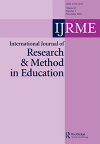
This study tested the psychometric properties of a tablet-based app designed to measure early literacy skills, and were also compared with paper-based tests. Agreement between scores for the tablet and traditional tests was high indicating tablet tests provide valid and reliable measures of children’s early literacy skills.
Subscribe to read the rest of the article »Log in
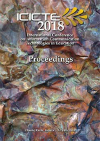
This study sought to identify the extent to which schools made public their goals with regard to the place of coding in the curriculum. This was achieved by examining the websites of a sample of schools from each state and territory
Subscribe to read the rest of the article »Log in
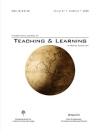
Results of a large-scale study of course-level faculty adoption of Open Educational Resources (OER). Results indicate OER adoption does much more than simply save students money. OER improve end-of-course grades and decrease D, F, and Withdrawal letter grade rates for all students.
Subscribe to read the rest of the article »Log in
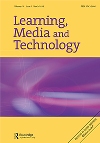
Content analysis of popular Apple and Android math and literacy preschool apps using a developmental framework to code and analyze apps’ educational features.
Subscribe to read the rest of the article »Log in
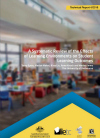
This systematic review identified evidence that different learning environments (blended, innovative learning environment (ILE), open-plan and traditional) have an impact on student learning outcomes.
Featured category: 21st century skills
NMC Horizon Report > 2018 Higher Education Edition
Australian Educational Technologies Trends (AETT) report
Over 100 leading Australian and international educators and experts concerned with Australian education contributed to this report on how Educational Technologies and the computing curriculum is currently being implemented in Australian schools, and the changes that may occur in the near future (5 years).
Students, computers and learning - making the connection
OECD report examines how students access to and use ICT
Mobile learning – why tablets? -- DERN's research brief looks at mobile learning and why tablets are so popular.
› 21st century skills (206)
› Assessment online (103)
› Blended learning (128)
› Collaboration (248)
› Digital literacy (239)
› Educational leadership (107)
› Engagement and performance (279)
› Evaluating ICT effects (98)
› ICT in education (475)
› Information (78)
› Information sources (107)
› Innovation (175)
› Interactive personal networking (99)
› Internet use (157)
› Learning communities (115)
› Learning environment (633)
› Learning systems (77)
› Mobile learning (218)
› Multimedia (65)
› Open scholarship (129)
› Pedagogy (441)
› Personalising learning (114)
› Social Media (176)
› Teacher capacity (144)
› Teacher education (96)
› Training (102)
› Trends (162)